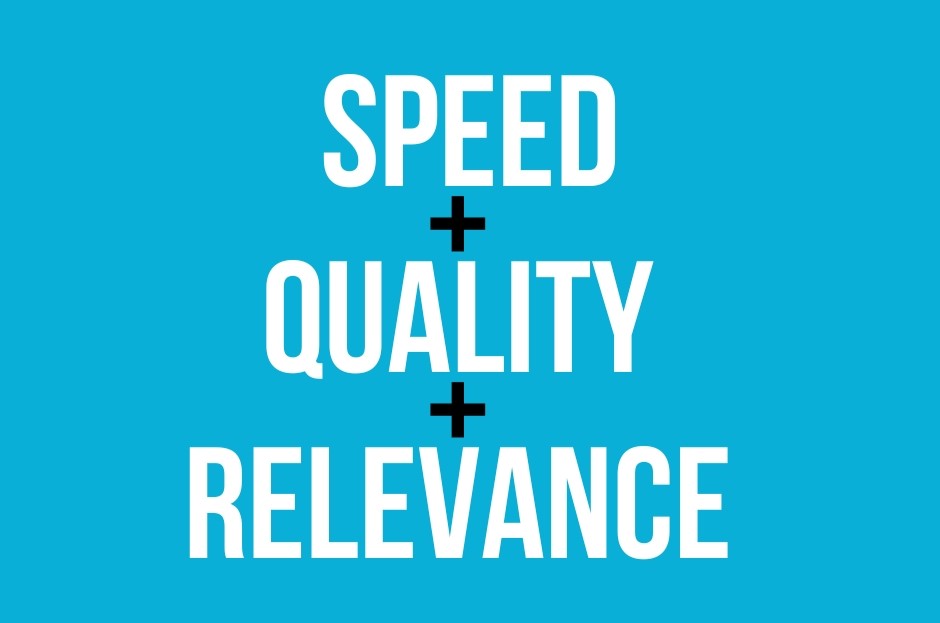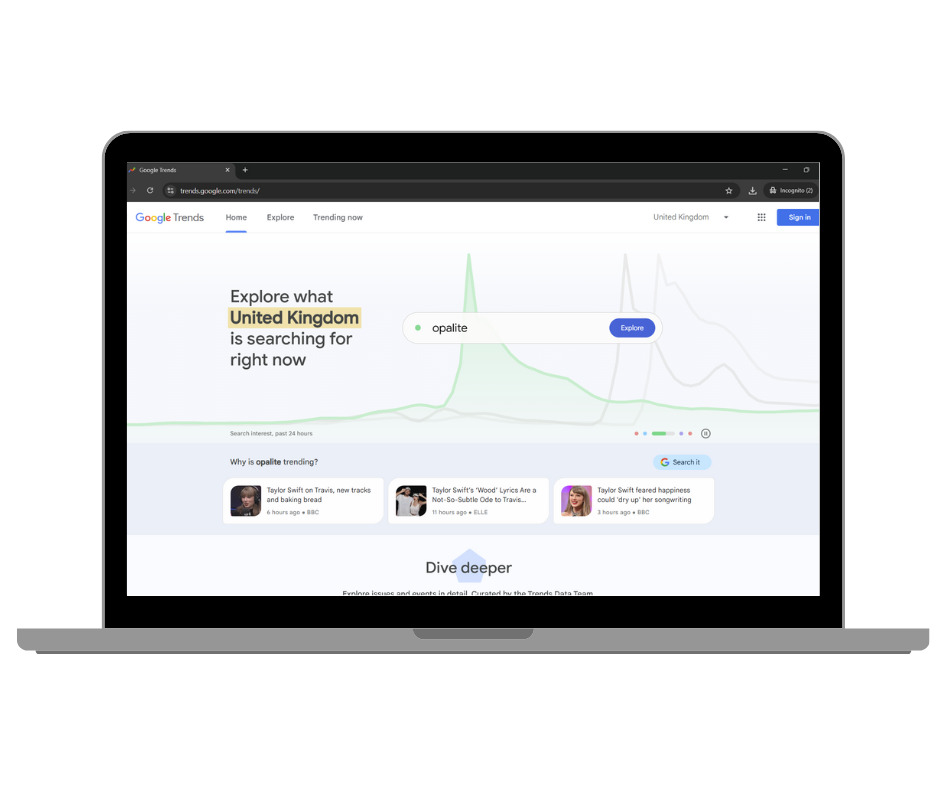Reactive PR is a valuable tactic in communications, digital PR and SEO.
Read our guide to learn how we use reactive PR to gain media coverage, high-quality backlinks and position our clients as thought leaders in their respective industries.
What is reactive PR?
Reactive PR is based on responding to the news or to a trending topic. This could be related to an announcement, new research, an incident, celebrities, trending products or other topics.
Essentially, it involves putting a brand at the heart of conversations surrounding the topic.
This tactic, which is also known as trendjacking or newsjacking, is used in traditional and digital PR to secure coverage in relevant media titles for clients.
These media titles can include top tier national press, broadcast media, consumer press or trade titles depending on the topic and how it impacts the audience.


What are the benefits of reactive PR?
Brand awareness is a key benefit of reactive PR and it can provide opportunities to gain brand mentions in media titles that reach new audiences.
Often with reactive PR we will position clients within a wider story, so rather than being the centre of the story, they are part of a story that may reach outside of their usual audience, such as a national daily newspaper.
Reactive PR can also help to position a business or its spokespeople as experts in their field, as part of a traditional PR or digital PR strategy, providing additional trust signals for potential customers.
The reason that it’s beneficial for journalists and their publications is that it can provide context and clarity, helping to explain complex industry terminology in layman’s terms – like Trump’s tariffs, for example – legal jargon or rights, or even a real-life example to bring a story to life.
Take a look at recent reactive PR examples that have secured top tier media coverage for our clients.

What are the SEO benefits of reactive PR?
Reactive digital PR can have a very positive impact on SEO and AI visibility when executed correctly, helping to move the dial on the authority and visibility of a website.
It is an effective tactic for building backlinks to a website from relevant websites, like high quality news sources, and gaining referral traffic, as journalists will typically link back to a client’s website as credit for their comments and expertise.
This makes reactive PR a valuable addition to the digital PR toolbox.
Even where backlinks are not gained through reactive activities, citations by third parties still offer both SEO and AI value.
In terms of SEO value, reactive PR can be used to build trust and authority while demonstrating expertise, sending all the right signals to Google to show Experience, Expertise, Authoritativeness and Trustworthiness (E-E-A-T).

How to succeed at reactive PR
Three is the magic number: speed, quality and relevance are the key to securing reactive media hits for you or your client.
Speed
The bigger the media title, the more competition you’ll have when it comes to securing reactive coverage.
To beat the crowds, you need to be quick to respond to a journalist’s request and have your expert ready to provide comments and approve those comments, all within the space of an hour or two!
Preparing comments on common topics in advance and having a bank of expert advice can help to speed up this process and put your client first in line for inclusion.
Quality
You need to provide the journalist with information that adds to their story.
Expert comments should provide more detail and colour, or advice, on the topic being discussed.
The higher the quality of your comments and the value they add, the more likely your client is to make the final edit.
Relevance
To provide maximum benefit for PR and SEO, the media title and the subject of the story should be relevant to your client and the industry they operate in.
Media coverage and backlinks provide little to no benefit if the titles they appear in aren’t relevant.
And they aren’t going to impact the KPIs that matter.


How to find reactive PR opportunities
You don’t need to spend to get started, there are numerous free tools that will enable you to identify reactive digital PR opportunities for yourself or your client.
Before that, we recommend spending time reading the media titles you want to gain coverage in to understand where your client could provide additional value and identify the journalists that cover relevant topics.
Synapse
This free platform enables journalists to request information and experts for stories they are working on.
You’ll need to create a profile on Synapse to access the requests marketplace, where you can search for relevant requests and pitch your expert.
You can also set up alerts, so new requests come straight to your inbox.
Talkwalker
This tool is similar to Google Alerts in that it picks up new keyword mentions from across the web, making it handy for online media monitoring. Although we find it more reliable!
You can also use it as a research tool to keep track of relevant news from your industry and competitor activity.
By keeping up with industry conversations, you can see trends emerge and identify suitable topics to provide reactive commentary on.
Set up Talkwalker alerts for topics you are interested in to get started.
Google Trends
Search behaviour is valuable for spotting emerging trends and for identifying when searches are likely to reach their annual peak.
Journalists are under pressure to publish stories that will drive traffic via search engines and social media, so this information is as valuable to them as it is to digital PRs.
Having insight into what audiences are searching and when via Google Trends can help you to track trending topics and keywords, and be ready to react to relevant topics or even pitch them into journalists ahead of time.
Check out our examples of trending keywords for new builds and how they can be utilised.
Event calendars
There are some newsworthy events that are impossible to plan reactive PR for, but if you follow the news closely enough, you’ll see certain patterns that reflect seasonal topics and big events in pop culture.
This makes it is possible to prepare reactive PR for common topics that are covered regularly or annually and this is why it pays to have key events in your calendar.
In the UK, we love nothing more than extreme weather and its impact on various areas of our lives.
We don’t always know when it will happen, but we can be confident that it will happen.
Too hot? Too cold? How does it impact your business and what advice can you share with others?
Prepare your tips on how to sleep in the heat, keep pets cool, if there’s a maximum temperature for the workplace, cool your car down, work outside… to be the first with the reaction and the advice when it’s needed.
Also, be ready for major events in the calendar like the Budget and have your spokesperson on standby to explain the real-world impact of announcements.


Can you use AI for reactive PR?
We recommend that you do not use AI to compile any comments or content for reactive PR.
You should also ensure that your spokesperson hasn’t used AI to create their comments either.
In an era of fake news and misinformation, it’s more important than ever for journalists to have sources and information they can trust from PRs and the brands they represent.
AI is rapidly eroding the trust that journalists have in PRs and recent examples have highlighted how even national media titles can unwillingly publish news stories containing AI generated content and fake or AI case studies.
And, understandably, this has made journalists nervous and increasingly suspicious about their sources.
The R&Co PR team have heard numerous journalists speak on this topic, underlining the importance of creating accurate news and content, and being a trusted news source.
Being deceived into using inaccurate information or even fake experts is a real fear for many journalists and media outlets and the implications could be incredibly damaging for them and the publications they work for, as well as the brands supplying the comments.
Demonstrate authenticity
Journalists want authentic experts with real experience to share their knowledge or opinions, they want tailored comments that fit their brief and they need to know they can trust PRs to deliver this.
AI uses multiple sources to compile the information it presents – information that is already available online.
What journalists really need is a fresh perspective or an explanation to illustrate a story, so you need to add value if you want to be the one to add colour to the story and AI is not the tool to do this.
Journalists want to know that your spokesperson is real, an expert in their field, a reliable source.
Read more about using AI in PR and the rise of fake experts in PR and SEO.
How to build trust with journalists
To avoid being caught out by AI generated experts, journalists are taking additional steps to verify the authenticity of their spokespeople and even check that they are real people.
Demonstrate the authority of your client by including links to their website bio page and LinkedIn profile page.
If this is the first time you are pitching to a journalist, then share examples of your client’s previous published comments to show the calibre of information you can provide.
Key takeaways for reactive PR success
- Identify spokespeople before the event
- Know what your experts can talk about
- Set up media alerts on key topics
- Respond to requests quickly
- Add value to a story
- Build trust and don’t let the journo down – if you can’t meet their deadline then don’t make promises!
Use our reactive digital PR services
Need help developing your reactive PR strategy? Our PR team is made up of former journalists and seasoned PR professionals with extensive experience in delivering reactive PR services for clients across many different industries.
Talk to us to learn how we can use reactive PR to position key personnel as industry thought leaders, build brand awareness and support your SEO activity.




